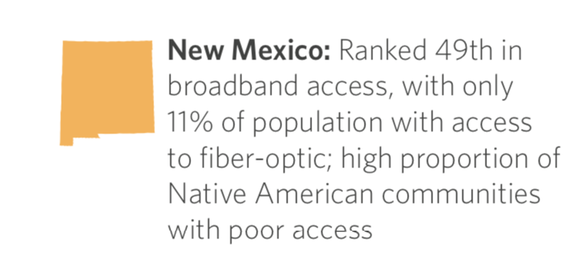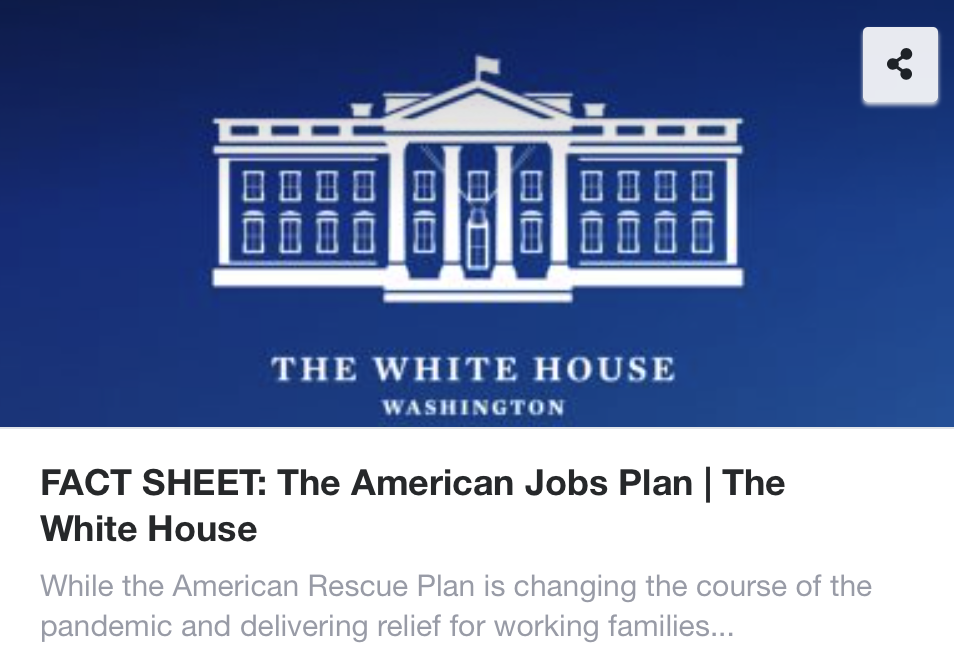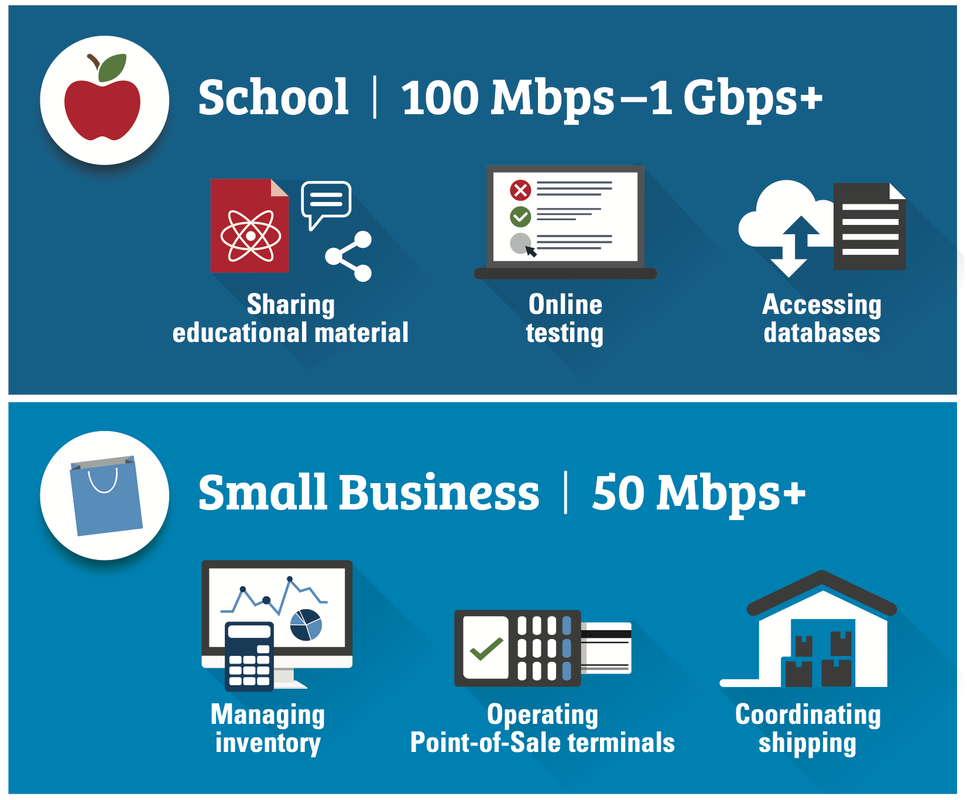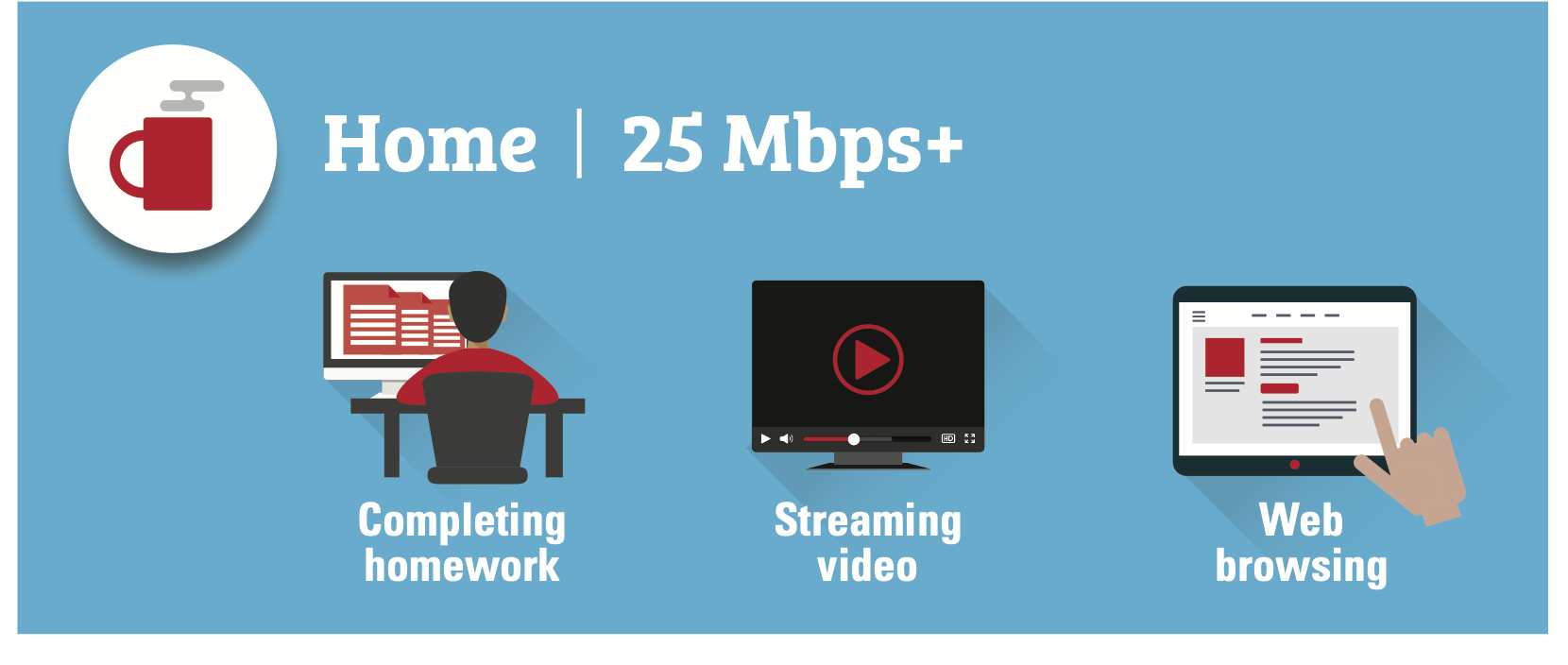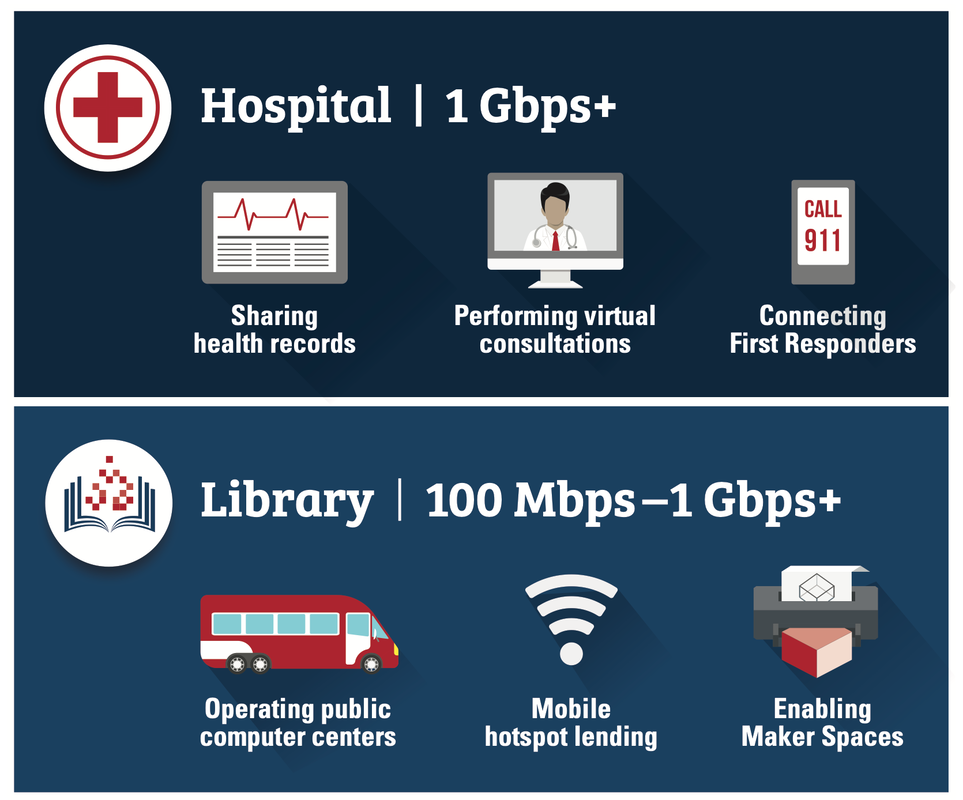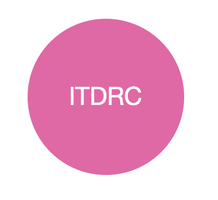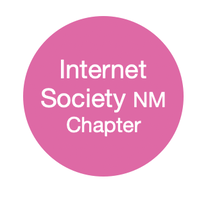What does Connectivity for ALL look like in New Mexico?
"All New Mexico businesses and homes have high-speed broadband Internet connectivity
that provides simultaneous download and upload speeds of 100 megabits per second (100/100 mbps)
or at least 25/10 mbps for each member of the household using the Internet.
All businesses and residents in New Mexico have affordable and reliable Internet service,
devices that meet their needs, free quality technical support,
and access to effective digital literacy training
so that all New Mexicans can effectively work and learn from home, access services online,
and participate successfully in the 21st century economy. “
Endorsing a Broadband Adoption strategy for New Mexico
that supports DAILY access to the Internet for all
1) at speeds, quality and capacity necessary to accomplish common tasks
|
Broadband is now considered Infrastructure!
|
March 31, 2021 - Biden’s Infrastructures Plan
Regarding Internet connectivity, The Plan states "continually providing subsidies to cover the cost of overpriced internet service is not the right long-term solution for consumers or taxpayers. Americans pay too much for the internet." The President believes we can bring affordable, reliable, high-speed broadband to every American through a historic investment of $100 billion. That investment will:
|
What is Broadband?
Broadband is the transmission of a wide bandwidth of data over a high speed internet connection. Broadband provides high speed internet access via multiple types of technologies including DSL, cable, fiber optics, wireless, and satellite.
Why is Broadband Important?
Broadband allows people to access online resources and opportunities for education, health care, public safety, government services, business development, remote working, marketing and promotions, community outreach, entertainment, and connecting with friends and family.
Broadband Adoption
The National Digital Inclusion Alliance (NDIA) defined Broadband Adoption as: DAILY access to the Internet
1) at speeds, quality and capacity necessary to accomplish common tasks,
2) with the digital skills [training, digital literacy] necessary to fully participate online,
3) on a personal device and secure convenient network.
1) at speeds, quality and capacity necessary to accomplish common tasks,
2) with the digital skills [training, digital literacy] necessary to fully participate online,
3) on a personal device and secure convenient network.
Benefits of Broadband
|
|
Studies show "commuters drive 53% to 77% less on days they telecommute than on days when they drive into work...and an employee who telecommutes three days a week can save an average of $5,878 per year in commuting costs
and avoid putting 9,060 pounds of pollutants into the environment."
and avoid putting 9,060 pounds of pollutants into the environment."
Broadband Basics:
Speed
Speed is important because it allows for faster transmission of data
(Uploading and Downloading) including text, images, sound, and video.
Speed is measured in Megabits per Second (Mbps)
Megabits per Second (Mbps) = million bits per second
Download Speed = from the Internet to the User's computer
Upload Speed = from the User's computer to the Internet
Bandwidth
Bandwidth refers the amount of data that can be transmitted at once. The larger the bandwidth, the more data that can flow at once and the faster the data can be received.
Speed is important because it allows for faster transmission of data
(Uploading and Downloading) including text, images, sound, and video.
Speed is measured in Megabits per Second (Mbps)
Megabits per Second (Mbps) = million bits per second
Download Speed = from the Internet to the User's computer
Upload Speed = from the User's computer to the Internet
Bandwidth
Bandwidth refers the amount of data that can be transmitted at once. The larger the bandwidth, the more data that can flow at once and the faster the data can be received.
National Broadband Standard
The Federal Communications Commission (FCC) recommends 25/3 Mbps
= 25 Mbps Download Speed and 3 Mbps Upload Speed
(Slower services, such as dial-up, run at 56 Kbps and cannot transmit data as quickly.)
= 25 Mbps Download Speed and 3 Mbps Upload Speed
(Slower services, such as dial-up, run at 56 Kbps and cannot transmit data as quickly.)
New Mexico Broadband Standard
The New Mexico Broadband Standard recommends 25/10 Mbps
= 25 Mbps Download Speed and 10 Mbps Upload Speed for each person in a household using the Internet
= 25 Mbps Download Speed and 10 Mbps Upload Speed for each person in a household using the Internet
Test your Internet Speed
Take a Speed Test to see if your service is underperforming. If your internet speed tests are far lower than what you pay for it,
call your Internet Service Provider (ISP) to see if they can resolve the problem. If they can't, it might be time to switch ISPs.
A speed test can also ID internet traffic patterns in your neighborhood. Try it different times of the day and throughout the week
to get an idea of when the slowing occurs. You can use the patterns you uncover
to plan your internet use during high-traffic time periods.
CLICK HERE
to test your Internet Connectivity and Speed
at different times of day and night
call your Internet Service Provider (ISP) to see if they can resolve the problem. If they can't, it might be time to switch ISPs.
A speed test can also ID internet traffic patterns in your neighborhood. Try it different times of the day and throughout the week
to get an idea of when the slowing occurs. You can use the patterns you uncover
to plan your internet use during high-traffic time periods.
CLICK HERE
to test your Internet Connectivity and Speed
at different times of day and night
What SPEED Do YOU Need?
Speed requirements vary based on the location, activities, and number of users. Here are suggestions from the BroadbandUSA:
How Fast is Fast Enough?
Here are some general household Internet guidelines for download speeds and associated activities:
|
What you can do with 5 Mbps
|
What you can do with 20 Mbps
|
How Broadband Is Accessed
- Digital Subscriber Lines (DSL) - data is transmitted to homes and businesses over traditional copper telephone lines, which are already installed. Not all copper telephone lines, however, are capable of transmitting data as DSL.
- Cable Modems - transmit data through the same "cable" (coaxial cables) that generate pictures and sounds on television sets.
- Fiber-Optic Cables - convert electrical signals carrying data into light and send the light through transparent glass fibers about the diameter of a human hair. Fiber transmits data at speeds much faster than DSL and cable, typically tens and even hundreds of Mbps.
- Wireless - Fixed wireless relies on the wireless transmission of data from a local antenna to a permanent location such as a home or business. The service is similar to what is delivered over DSL or a cable modem, but the transmission is wireless. Mobile wireless connects users in temporary locations such as coffee shops. Mobile broadband is transmitted through technologies such as portable modems and mobile phones.
- Satellite - wireless transmission that uses satellite technology to transmit data and is useful for serving remote or sparsely populated areas.
- Broadband over Powerlines (BPL) - an emerging technology that transmits data over low- and medium-voltage power lines and is provided to homes using existing electrical connections and outlets.
"In today’s world, internet connectivity is no longer a luxury—it is a necessity. Like running water and electricity, broadband is as vital a resource to New Mexico communities and is absolutely critical to the future of our economy, education, health, and safety.”
CommUNITY Learning Network Highlights:
|
Meeting weekly with statewide Homework Gap Team to connected more than
44,000 NM students without Internet access @ home |
Worked with ITDRC (Information Technology Disaster Resource Center). to deploy more than 145
wireless access points and hotspots in the region |
Founded the
Internet Society New Mexico Chapter and co-hosted the 2017 Indigenous Connectivity Summit in Santa Fe |
NDIA
affiliate (National Digital Inclusion Alliance), and piloting the New Mexico Connectivity Survey and more... |

